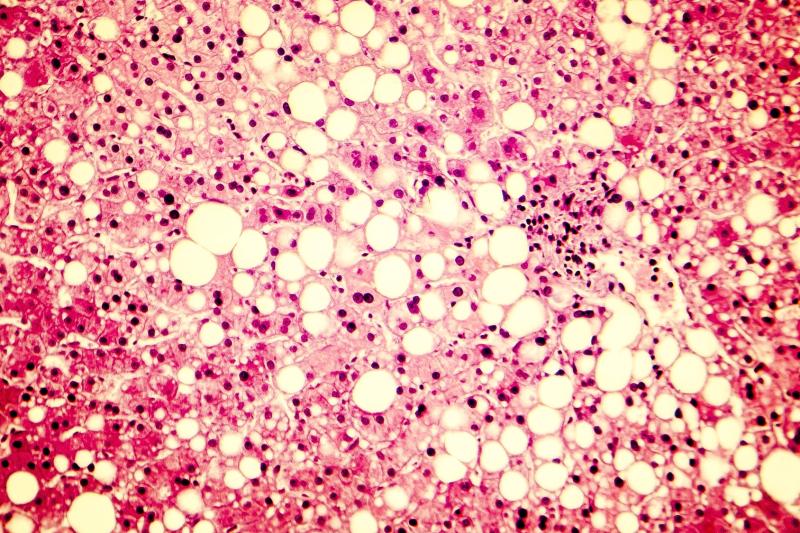
The haptoglobin (Hp) 2 allele correlates with greater histologic and biological improvement in nonalcoholic steatohepatitis (NASH) with vitamin E treatment as compared with the Hp 1 allele, a study has shown.
“Hp genotype has been linked to oxidative stress and cardiovascular outcomes in response to vitamin E among patients with diabetes mellitus,” the investigators said.
A posthoc analysis was conducted on 228 patients treated with vitamin E or placebo in two clinical trials. The investigators used regression analysis to examine the effect of vitamin E vs placebo, by Hp genotype (1-1, 2-1 or 2-2), on histologic features and laboratory markers of nonalcoholic fatty liver disease, comparing baseline to end-of-treatment values. They also included an interaction term in the regression models to assess differential treatment effect across Hp genotypes.
Hp 2-2 patients who received vitamin E vs placebo had significant histologic improvement (51 percent vs 20 percent; odds ratio [OR], 4.2; p=0.006), resolution of steatohepatitis (44 percent vs 12 percent; OR, 6.2; p=0.009), decrease in nonalcoholic fatty liver disease Activity Score (NAS; –2.2 vs –0.6; p=0.001), and decrease in liver enzymes alanine aminotransferase, aspartate aminotransferase, alkaline phosphatase and γ-glutamyl transpeptidase.
Hp 2-1 patients treated with vitamin E vs placebo also demonstrated improved resolution of steatohepatitis, NAS and liver enzymes, whereas Hp 1-1 patients did not show significant improvements in histology or liver enzymes. Vitamin E had no effect on fibrosis stage in any group.
In regression analysis, having Hp 2-2 or 2-1 showed incremental benefit for all liver enzymes as compared with having Hp 1-1.